 |
 |
 |
||||||||
- Luxor - Red Chapel of Hatshepsut The Red Chapel of Hatshepsut or the Chapelle Rouge was originally constructed as a Barque Shrine during the reign of Queen Hatshepsut. She was the fifth Pharaoh of the eighteenth dynasty of Ancient Egypt and ruled from ~ 1479 to 1458 BC.
The exact original location of the building is unknown, because it was completely destroyed during the XVIIIth Dynasty. Fragments of it were used by Amenhotep III as a building material for the III Pylon of Karnak. At the end of the XIX century, a large part of the massive III Pylon of Amenhotep III at Karnak collapsed during an earthquake. In 1924, the Director General of the Egyptian Antiquities Service, Pierre Lacau, ordered the Director of the the archaeological works in Karnak Henri Shevri to restore this very III Pylon. So it turned out that during the restoration work the Pylon had to be completely dismantled. This work took years, because of the groundwaters. So the work could be possible only when the Nile was in its low phase. During these works, Chevrier discovered about a thousand of blocks belonging to 11 different structures.
Despite the fact that many of blocks were badly damaged, the bas-reliefs that were engraved on them were preserved in excellent condition, due to the mortar, used in the time of construction of the III Pylon, which protected the bas-reliefs from erosion and mechanical damage. The base masonry of the Chapel and its doorways were built of diorite and granit blocks, and its walls were built of red quartzite, quarried from the Gebel Akhmar, which in translation from Arabic means "red mountain". This fact explains the modern name of this ancient structure, known as the "Red Chapel". Work on reconstruction of the original buildings, which for several millennia formed the III Pylon of the Karnak Temple, progressed slowly, but methodically. After determining the correct block orientation and their placement, Chevrier was able to make the almost complete restoration of the several ancient structures, including the so-called White Chapel of Senusert I and Red Chapel of Hatshepsut. Despite the fact that the fragments of the Red Chapel were extracted from the ruins of the III Pylon of Karnak in the beginning of the 20th century, its reconstruction began only at the very beginning of the 21st century. A decision to reconstract the monument was taken in 1997. This work, actually begun in March, 2000 and were totally completed in early 2002. The reconstruction project was undertaken by the Franco Egyptian Center, directed by Francois Larche, with the support of the Supreme Council of Antiquities (SCA).
The blocks, numbering about 315 were carefully studied in terms of orientation and their original order. An unusual feature for Egyptologists was the fact that most of the blocks contained a complete bas-relief scene without taking into account the transition of the engraved image to the neighboring horizontal blocks. Proceeding from this fact, some researchers believe that the Red Chapel was the first "prefabricated" structure in history, when the bas-reliefs were engraved before the building was erected. Such an architectural method in many ways made it difficult to determine the original sequence of blocks during the modern reconstruction of the monument. Moreover, the III Pylon hid in itself only a half of the chapel blocks, while the others has disappeared in an unknown direction and have not been found till the present time. Therefore, modern blocks, cut from the same rock were used during the reconstruction. In some places, a modern brick was used, which was then plastered over and painted in color matching with the original walls. Below is a scheme, showing the position of the original (numbered) blocks in the general masonry of the Red Chapel. This scheme is taken from the book of Pierre Lacau and Henri Shevrier "Une chapelle d'atshepsout à Karnak II", in which the process of mounting the walls of the Red Chapel is demonstrated in great details.
During the restoration work, it was found out that the construction of the Chapel has probably began not long before the death of Queen Hatshepsut. After her death her successor, Thutmose III, has continued the construction of the Chapel, but never finished. This assumption is based on the fact that the blocks, forming the upper rows of the walls of the building, as well as the upper registers of its southern facade and the diorite doorways are bearing only the name of King Thutmose III. This can mean only one, that by the time of the last stage of the construction of the Chapel, he had already ascended the King's Throne.
After the modern reconstruction works of the Red Chapel were finished, a new building ( height - 5.5 m, width - 6 m and length - 18 m) "grew up" in the territory of Karnak, in the open-air museum, next to the White Chapel of Senusert I, already assembled in 1938.
The building has 2 internal chambers, separated by the doorway.
In April 2018, our ISIDA Project research team has visited the Red Chapel of Hatshepsut alone with the White Chapel of Senusret I. Our purpose was to study the history of the construction of Karnak, which we have already visited many times, starting from the year 2012. 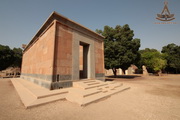 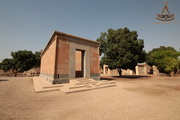 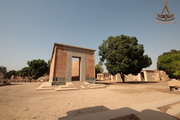  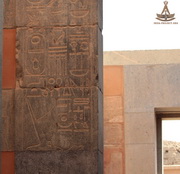 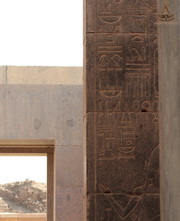 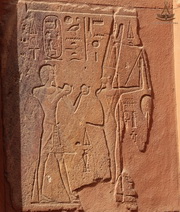 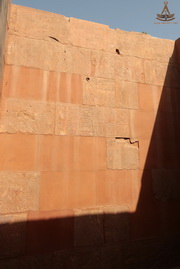 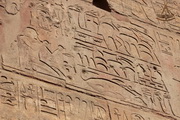 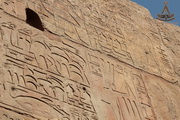 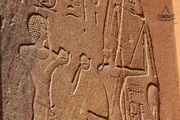  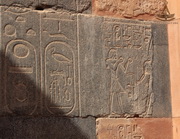  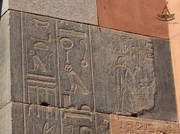 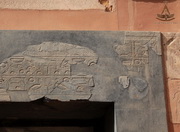 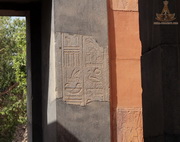 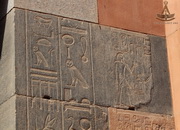 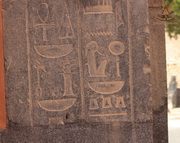  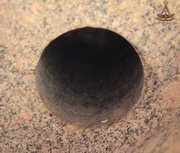  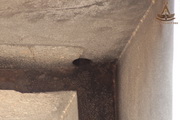 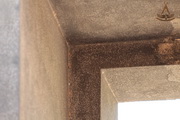 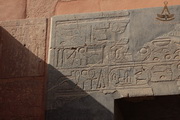 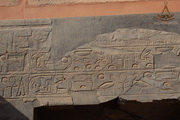 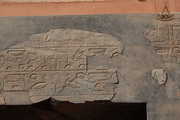  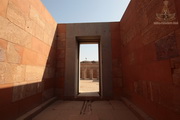   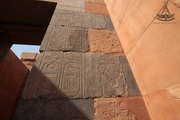 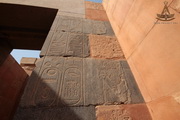  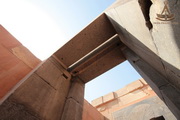 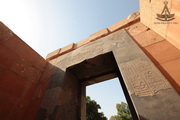   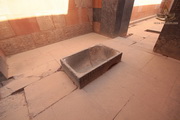  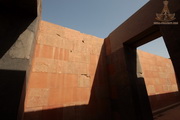 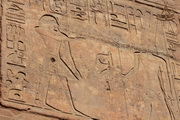 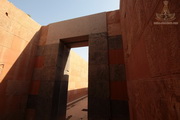 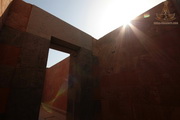 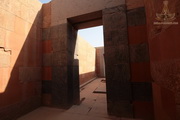 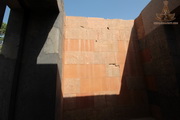 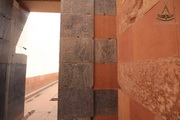 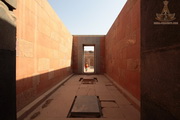 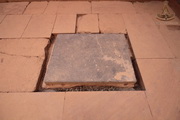 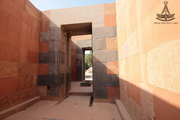 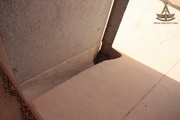 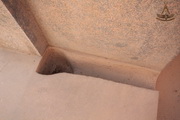 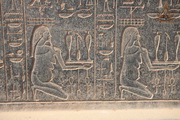 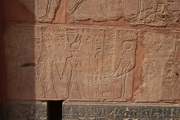 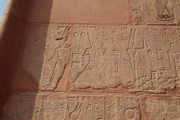 
|
||||||||||
 |
 |
 |